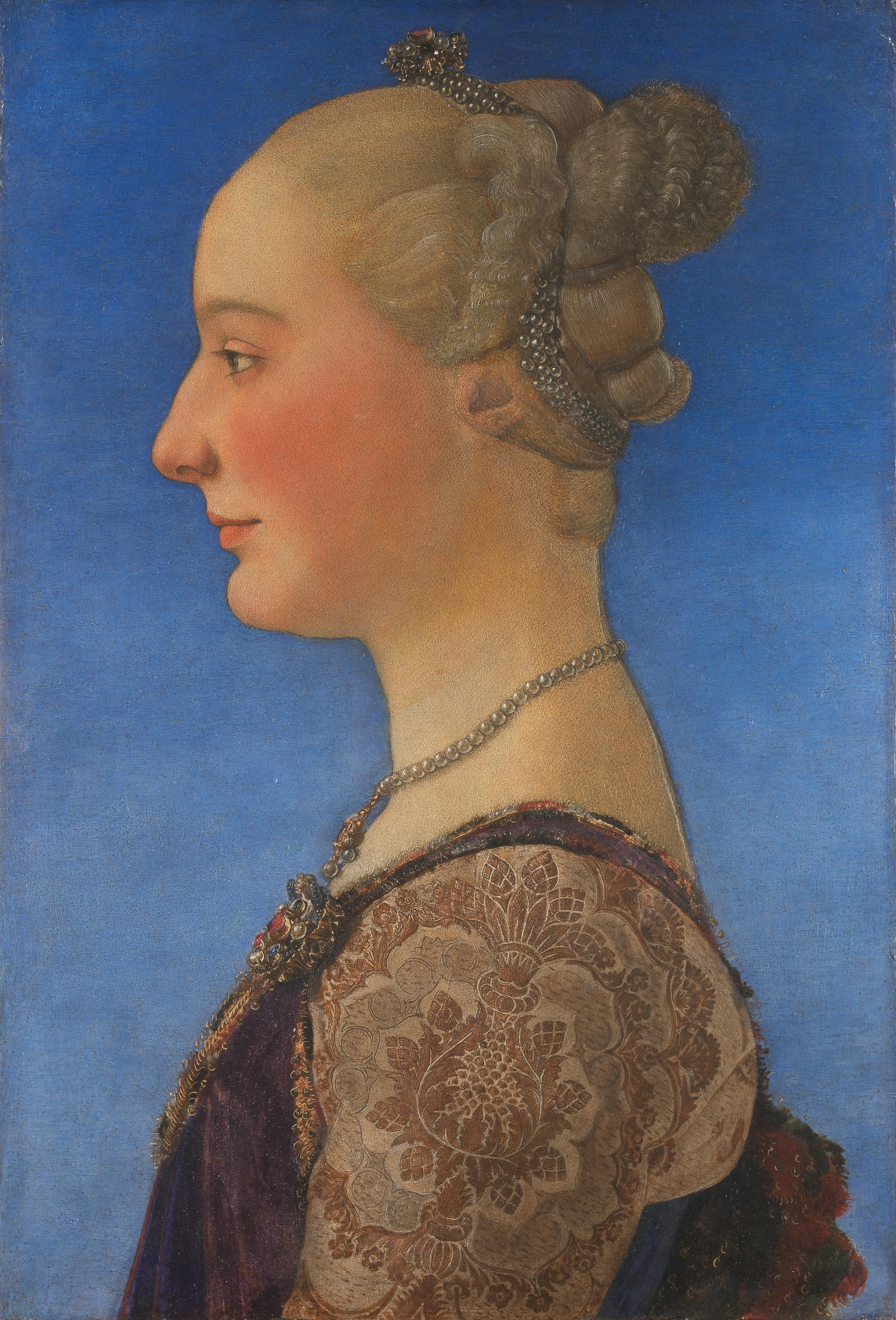Portrait of a Lady
Attributed to Piero del Pollaiolo (Florence 1441 - Rome 1496)
This half-face portrait follows the approach in vogue until the third quarter of the 15th century, which was inspired by ancient numismatics and allowed the somatic features of the character to be translated rather faithfully. Against a cerulean background stands out the face of a young woman with long blond hair gathered up in a complex hairstyle adorned with jewellery. The social status of the lady is also emphasized by her clothing, consisting of a dark red velvet surcoat, the giornea, edged with a golden braid and multi-coloured fringes. Underneath she is wearing a long-sleeved tunic, the surplice, decorated on the forearm with a pomegranate motif, which was very fashionable in the 15th century and, in this context, also an emblem of fertility. The soft fall of the giornea on the belly is to be considered as a wish for motherhood. The young woman wears a pearl necklace with a pendant, and on her chest is pinned a jewel made of gold, enamel and precious stones depicting an angel. In a period in which the line between science and superstition was very blurred, the jewellery adorned with stones was not just an ornament, but served also as a protective amulet.
The display of jewellery and precious garments aims to emphasize the wealth of the family to which the unknown lady belonged, and the portrait was probably painted for the woman's wedding, which used to mark the alliance between families and represented a real contract.
Today there is a tendency to attribute the Portrait of a Lady, currently at the Uffizi, to the Pollaiolo brothers, and in particular to Piero, due to his taste for the textural and tactile rendering of fabrics, the detailed depiction of goldsmithing, and the meticulous rendering of the hair. The imperfect conservation of the painting, as it is also indicated by the excessive blushing of the cheeks, makes the attribution of the work particularly problematic.
Also unknown is the history of the painting, which was preserved at the Pitti Palace in the 19th century and brought to the Uffizi in 1861.
A. Wright, The Pollaiolo brothers. The arts of Florence and Rome, New Haven - Londra 2005, pp. 119, 125-127; A. Tartuferi, in La stanza dei Pollaiolo, a cura di A. Natali e A. Tartuferi, Firenze 2007, pp. 118-121; A. Galli, Antonio e Piero del Pollaiolo. “Nell’argento e nell’oro, in pittura e nel bronzo…”, a cura di A. Di Lorenzo e A. Galli, Milano 2014, pp. 250-252
